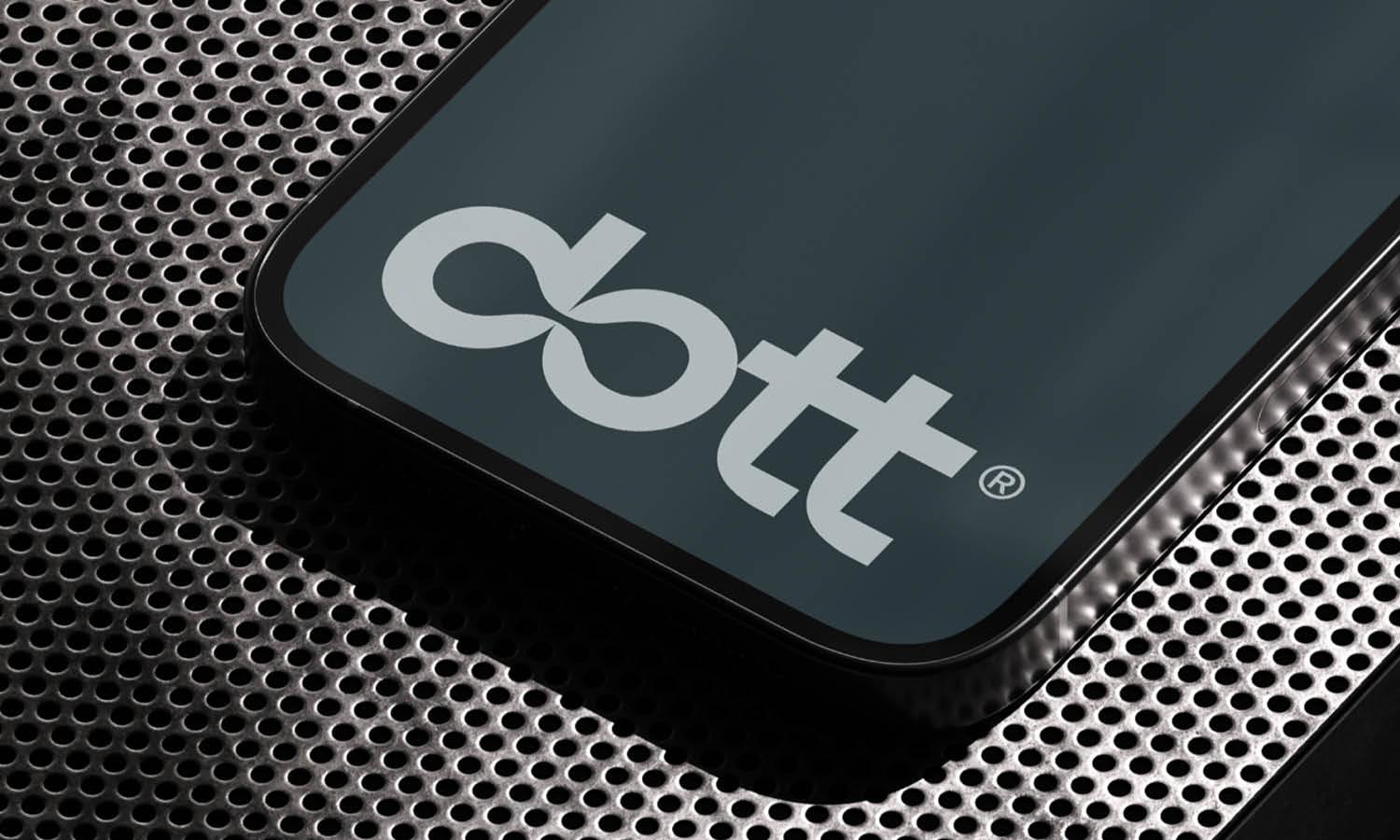How To Incorporate Key Elements Into Logo Designs

Source: Aditya Chhartrala, Fintech Logo Design, Dribble, https://dribbble.com/shots/18690405-Fintech-logo-design
Designing a logo is not just about creating an attractive visual; it's about encapsulating the essence of a brand into a singular, coherent image that communicates its values, appeals to its target audience, and stands out in the competitive marketplace. The incorporation of key elements into logo designs is fundamental to crafting a symbol that is both memorable and effective. This process involves a deep understanding of the brand’s core identity, meticulous selection of colors and typography, and strategic use of shapes and space to convey the right message.
Every detail in a logo—from the color palette to the font choice—plays a crucial role in how the logo is perceived and can significantly impact a brand's public image. In this article, we will explore several crucial steps that guide designers in integrating these essential components seamlessly and effectively, ensuring that every logo they create not only captures the eye but also encapsulates the brand’s ethos in a meaningful way. By adhering to these principles, designers can develop logos that are not just visually appealing but also strategically aligned with the brand’s objectives.
Understand the Brand Identity
A fundamental step in logo design is understanding the brand identity, which serves as the foundation for all design decisions. This understanding encompasses knowing the brand’s mission, vision, core values, and target audience. A logo must reflect these aspects to communicate the brand's message effectively. It acts as the brand's first impression, often shaping public perception and emotional connection. To achieve this, designers must engage in thorough research, including discussions with stakeholders and market analysis to capture the essence of the brand accurately. This process ensures the logo resonates with the intended demographic and stands apart in a crowded marketplace.
Moreover, understanding the brand identity helps in selecting the appropriate design elements, such as colors, shapes, and symbols, that align with the brand’s ethos. For example, a luxury brand might opt for a sleek, minimalist logo that conveys elegance and exclusivity, while a children's brand might choose a bright and playful design. By deeply understanding the brand identity, designers can create a logo that not only looks appealing but also embodies the brand's character and goals, making it a crucial element in the brand’s overall marketing strategy.
Simplicity Is Key
In the realm of logo design, the principle of simplicity reigns supreme. A straightforward and uncluttered logo not only captures attention more effectively but also ensures lasting recognition. This key element in logo designs is about stripping away the non-essential elements and focusing on what is absolutely necessary. Simple logos are easier for audiences to recall and recognize, making them more likely to become synonymous with the brand itself. For instance, some of the most iconic logos in the world—think of Apple or Nike—rely on minimalistic designs that communicate their brand identity quickly and effectively.
Simplifying a logo also enhances its versatility, allowing it to be used across various mediums and scales without losing its impact. When designing a logo, consider whether each element is essential to the brand’s message. Reducing complexity not only refines visual appeal but also strengthens the communication of the brand’s core values. As a designer, achieving simplicity requires a careful balance of creativity and restraint, ensuring the logo remains engaging yet straightforward enough to stand the test of time.
Choose Colors Wisely
Selecting the right colors for a logo is pivotal in conveying the intended emotions and messages of a brand. Colors have the power to influence perception and behavior, making their choice a critical component in logo design. Understanding color psychology can help designers use hues to their advantage, creating a strong emotional connection between the brand and its audience. For example, blue often represents trust and dependability, making it a popular choice for financial institutions, while green is associated with health and sustainability, commonly used by eco-friendly brands. It’s also essential to consider cultural contexts as colors can have varying meanings in different cultures.
Moreover, the choice of colors should ensure good visibility and legibility across all uses, from digital media to print. Designers should also test logos in black and white or grayscale to ensure they maintain their effectiveness without color, which is vital for uses in certain contexts where color is not feasible. By choosing colors wisely, designers can significantly enhance the logo's ability to communicate the brand’s identity effectively and attractively, ensuring it resonates well with the intended audience.

Source: Vadim Carazan, Codesta Pattern and Business Cards, Dribble, https://dribbble.com/shots/18438519-Codesta-pattern-and-business-cards
Typography Matters
Typography is a critical element in logo design, significantly influencing a logo’s readability and personality. The choice of typeface should reflect the brand’s character while being practical across various applications and sizes. Each font carries its own weight and style—serif fonts, for example, are often seen as traditional and reliable, while sans-serif fonts are perceived as modern and approachable. Script fonts might add a touch of elegance or whimsy, depending on their styling. Choosing the right typography involves considering how it complements other elements of the logo, such as symbols or icons, and its impact on the logo’s overall readability and recognition.
It is also crucial to ensure that the typography is scalable, maintaining legibility whether it is on a large billboard or a small business card. In addition to aesthetics, the uniqueness of the typography can play a significant role in setting a logo apart from competitors. Custom typefaces are particularly valuable for creating a distinctive brand identity that cannot be easily replicated. By carefully selecting and crafting typography, designers can enhance the effectiveness of the logo and ensure it communicates the brand’s message with clarity and visual appeal.
Use Negative Space Creatively
Creative use of negative space is an advanced technique in logo design that involves incorporating an additional visual message within the empty spaces of the logo. This key element can turn a simple logo into a captivating and memorable piece of art. Negative space challenges the viewer's perception, often creating a 'hidden' image that can provide a delightful surprise. For instance, the FedEx logo famously uses negative space between the letters 'E' and 'x' to form an arrow, symbolizing speed and precision. Using negative space effectively requires a clever and minimalistic approach to design. It enhances the storytelling aspect of the logo, allowing brands to communicate more than just their identity.
This technique not only adds depth to the design but also reinforces the brand message in a subtle yet powerful way. When executed correctly, logos utilizing negative space stand out in the minds of consumers, enhancing brand recall. It’s essential for designers to balance the use of negative space without compromising the logo's clarity and legibility. Integrating this element creatively into logo designs can significantly elevate the overall impact, making the brand more distinctive and engaging in the competitive market.
Incorporate Scalability
Scalability is crucial in logo design, ensuring that a logo maintains its integrity and effectiveness across all sizes and applications. A scalable logo looks great on a giant billboard and equally effective on a small promotional pen. This adaptability is key to maintaining a consistent brand image in various contexts. Designers must consider how the logo will appear in different mediums, including digital displays, print materials, and merchandise. To achieve scalability, simplicity often plays a significant role. Complex designs with intricate details may lose clarity when scaled down, which can lead to a loss of the logo's intended impact.
Vector graphics are typically used to create scalable logos because they retain their quality at any size, unlike raster images that can pixelate. Furthermore, it’s essential to test the logo in multiple formats and sizes during the design process to ensure that it remains legible and visually appealing in every context. By prioritizing scalability, designers ensure that the logo serves its purpose as a versatile and enduring symbol of the brand, adaptable to the evolving needs of the business and its marketing strategies.
Balance the Design
Achieving balance in logo design is essential for creating a visually appealing and effective logo. Balance involves arranging elements so that the logo feels stable and aesthetically pleasing. This key element in logo designs can be symmetrical, where elements are mirrored on either side of a central line, or asymmetrical, which uses different elements that have equal visual weight. The goal is to distribute the visual weight of colors, shapes, and space evenly so that no one part of the logo overpowers another. For instance, a large, dark-colored element can be balanced by a smaller, lighter element to maintain visual harmony. Effective use of balance makes a logo more comfortable to the eye and ensures that all parts of the design are integrated into a cohesive whole.
It also helps in reinforcing the stability and structure of the brand it represents. Designers must consider the placement of type, icons, and empty space to create equilibrium within the logo. Testing the logo in various contexts can help identify if it maintains balance across different uses. A well-balanced logo not only increases its memorability but also enhances its functionality across diverse media.

Source: VASK Studio, Netro Visual Identity, Dribble, https://dribbble.com/shots/16438363-netro-Visual-identity
Create a Timeless Design
Creating a timeless design is a key objective in logo creation, aiming to ensure the logo remains effective and relevant over many years. Timelessness in a logo helps a brand avoid frequent redesigns, maintaining brand recognition and loyalty. To achieve a timeless design, focus on simplicity and avoid overly trendy elements that may become dated quickly. Classic design principles, such as clean lines and balanced proportions, are fundamental. A timeless logo typically features minimal colors and fonts that have proven their endurance over time.
For example, the logos for Coca-Cola and IBM have remained largely unchanged for decades, illustrating the power of a timeless design. When designing a logo, it is crucial to think long-term and consider how the design will age. Incorporating versatility and relevance to the brand’s core identity helps the logo withstand trends and changes in the industry. By focusing on what makes a brand unique and avoiding the temptation to follow fleeting design fads, designers can create logos that last a lifetime, supporting the brand as it evolves and grows.
Adaptability Across Media
Adaptability across media is a crucial element in logo design, ensuring that a logo performs well in various formats and environments. This key element ensures that the logo maintains its integrity and effectiveness, whether displayed on digital platforms, print, or physical merchandise. A logo must be flexible enough to adapt to different backgrounds, sizes, and applications without losing its core identity. This includes maintaining legibility and impact when scaled down for small devices or simplified for use in single-color applications. Designers should create logos that are vector-based, allowing for seamless scaling and modification. Testing the logo across different media types—such as online, in print ads, on billboards, and merchandise—can ensure it remains effective.
The use of consistent elements, such as color palettes and design motifs, helps maintain the brand’s identity across diverse platforms. Furthermore, considering modern digital requirements, such as favicon versions for websites or icons for mobile apps, is essential. By ensuring a logo’s adaptability, designers can guarantee that it not only meets the current needs of the brand but is also prepared for future media evolutions, maintaining brand consistency and recognition in all user interactions.
Reflect the Brand’s Tone
Reflecting the brand’s tone in the logo design is essential for aligning the visual identity with the company’s personality and values. This key element helps in communicating the brand’s essence to its audience, making the logo not just a visual symbol but a representation of the brand’s character. Whether the brand aims for a professional, friendly, innovative, or luxurious image, every aspect of the logo—from color choice to typography and imagery—should reinforce this tone. For instance, a tech company that prides itself on innovation might opt for a sleek, modern design with bold angles and a futuristic font, while a local bakery might use soft, warm colors and a hand-drawn typeface to convey its homey, approachable vibe.
It is important for designers to immerse themselves in the brand’s culture and communicate effectively with stakeholders to understand and accurately translate the brand’s tone into the logo design. This alignment enhances the brand’s market positioning and aids in attracting the right target audience, fostering a quick emotional connection between the brand and its consumers. A logo that effectively reflects the brand’s tone can significantly enhance recognition and loyalty, serving as a powerful tool in the brand’s marketing strategy.
Conclusion
Incorporating key elements into logo designs is essential for creating powerful and enduring brand symbols. A well-designed logo, marked by simplicity, adaptability, and a deep understanding of the brand’s identity, stands out in a competitive market. It effectively communicates the brand’s message and reflects its values, ensuring a strong connection with the target audience. Designers must focus on balance, scalability, and the creative use of colors and typography to craft logos that are not only visually captivating but also versatile and timeless. By adhering to these principles, a logo can significantly contribute to a brand’s recognition and success.
Let Us Know What You Think!
Every information you read here are written and curated by Kreafolk's team, carefully pieced together with our creative community in mind. Did you enjoy our contents? Leave a comment below and share your thoughts. Cheers to more creative articles and inspirations!
















Leave a Comment